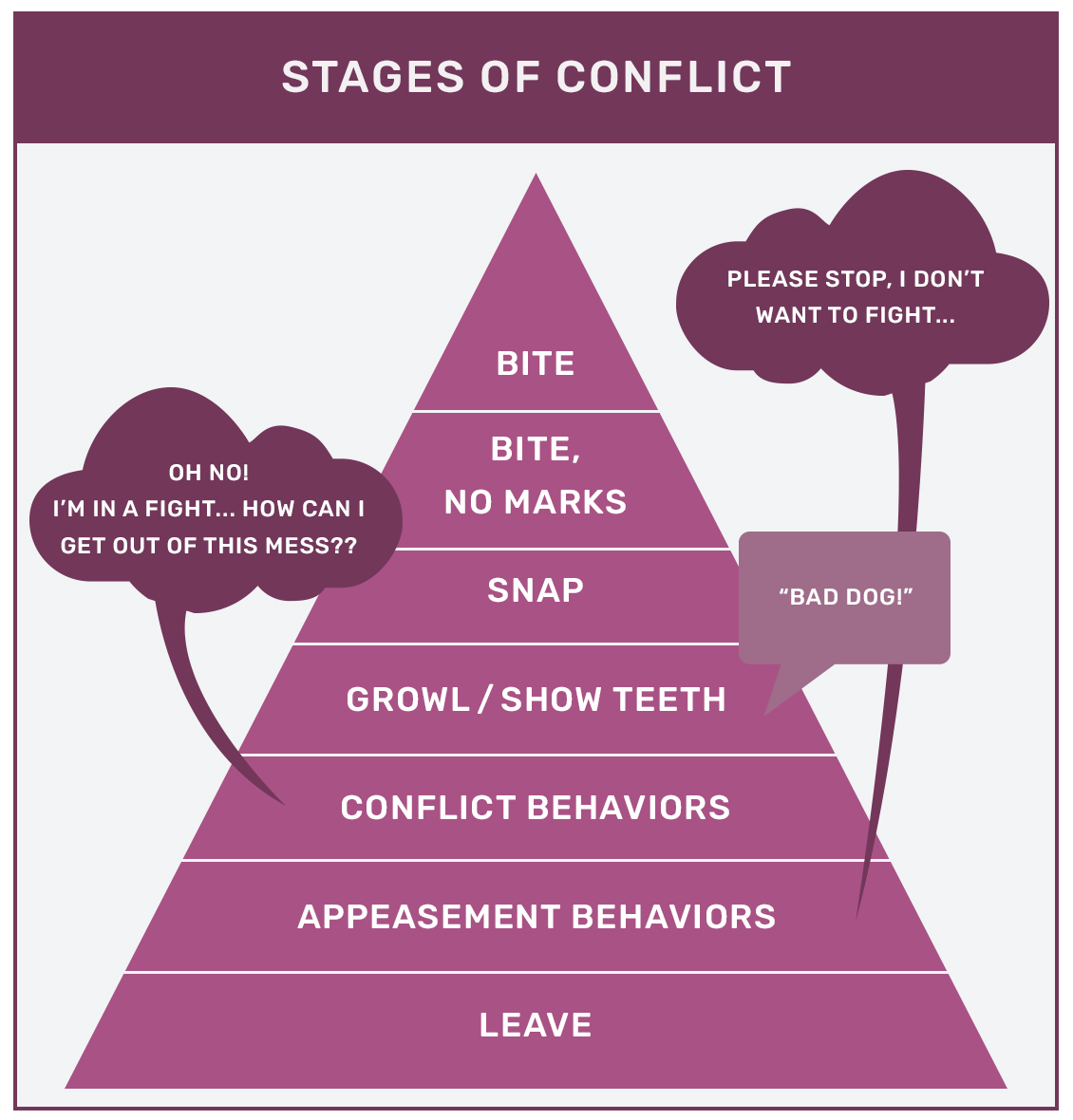Page20
fight or flight
It is not a dog’s first instinct to attack others. Their posture escalates with each body signal that is ignored by the other. Recognizing each phase will help you understand the threat level the pet is experiencing so that you can better manage situations to reduce the stress the pet is experiencing.
LEAVE
A pet’s first instinct is to leave a situation, if they safely can, when they feel threatened or scared. If this is not possible, as often occurs in the veterinary situation, you’ll see appeasement behaviors.
Appeasement Behaviors
Appeasement behaviors are the dog’s way of saying “please don’t hurt me.” Appeasement behaviors include a lowered and/or tucked tail, a dog rolled over on his back or an averted gaze and ears down.

conflict behaviors
When these signals are not recognized and we continue with our actions, dogs will start to escalate to conflict behaviors. The dog now thinks they are in a fight but don’t know what to do. They are still looking for ways to avoid the fight. Signs of conflict can include tense body posture, raised hackles or a fixed stare.
growl/show teeth
The next level is a growl and/or showing the teeth. It is at this point that pet owners will often assume that the dog is misbehaving. Unfortunately, this is all related to miscommunication between the human and the pet. We forget to look at our patient and see what they are telling us. All the signals that the dog has been displaying up to this point have been canine communication to show how uncomfortable the situation is becoming.
snap
If growling or snarling do not stop the unwanted encounter, a dog may continue to show discomfort. A dog may then snap – purposefully not biting. This is another warning without engaging in a physical confrontation.
biting
As a last resort, dogs will often turn to biting. Depending on how threatened the dog is, he may bite without leaving a mark or bite to draw blood. Some dogs can escalate very quickly or very slowly depending upon their past experiences, your reaction to the behaviors, how quickly all this has occurred and the environment and ability to escape. Understanding the escalation of body language can help you better respond to the dog’s level of fear and help you better manage the situation and prevent further escalation and possible injury.

